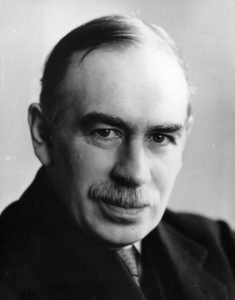 Professor Satya Narayan Misra in Bhubaneswar, June 10, 2024: Three economists have straddled the policy space globally, as no one else. Adam Smith, with his invisible hand and free market promoted welfare of all and hoped to bolster wealth of countries. Marx prophesized death of capitalism under its own weight of contradiction to usher in a utopian classless society. And John Maynard Keynes who understood that automatic equilibrium does not happen always and capitalism can relapse into severe economic depression which can be squelched through public investment and generating additional employment.
Professor Satya Narayan Misra in Bhubaneswar, June 10, 2024: Three economists have straddled the policy space globally, as no one else. Adam Smith, with his invisible hand and free market promoted welfare of all and hoped to bolster wealth of countries. Marx prophesized death of capitalism under its own weight of contradiction to usher in a utopian classless society. And John Maynard Keynes who understood that automatic equilibrium does not happen always and capitalism can relapse into severe economic depression which can be squelched through public investment and generating additional employment.
Such was the case in the US when the national income precipitously fell from 87 billion dollars in 1930 to 42 billion dollars in 1932, when a song was being played, ‘Brother, can you spare a dime?’ By 1933, the nation was virtually prostrate. The jobless millions were like an embolism in the nation’s vital circulation. The economists wrung their hands and wracked their brains and called upon the spirit of Adam Smith, but could neither offer diagnosis nor remedy.
The grim prognostication of Marx cast their shadows. The man who tackled it was almost a dilettante. The war years brought Keynes to the treasury and assigned to work on Britain’s overseas finances. He was soon a key figure in the treasury and contributed more to winning the war than any other person in civil life. But all this was tangential to the main thing – the settlement of Europe after the war.
Keynes was the first to see that the Versailles Treaty of 1919 laid the unwitting goad for an even more formidable resurgence of German autarchy and militarism. He resigned in despair three days before the treaty was signed and began his polemic against it in a brilliant book, The Economic Consequences of the Peace. He wrote of Clemenceau that ‘he had only one illusion – France, and one disillusion – mankind.’
Keynes saw the conference, a reckless settlement of political grudge of France against Germany in utter disregard of the pressing problem of the moment – the resuscitation of Europe into an integrating and functioning whole. He foresaw the rise of fascism and Hitler to avenge the humiliation of Vienna. He saw the peace to be a Carthaginian one that would force Germany to resort to the most vicious practices of international Keynes’ magnum opus The General Theory of Employment had been brewing for some time.
He had written to Bernard Shaw in 1935, ‘I believe myself to be writing a book on economic theory which will largely revolutionize in the course of the next ten years – the way the world thinks about economic problems. He was as usual prescient and right. The book like the economic consequences of 1920 was to be a bombshell. It stood economics on its head, very much as The Wealth of Nations of Smith and Capital of Marx had done.
The General Theory had a startling and dismaying conclusion. There was no automatic safety mechanism. A depression, in other words, might not cure itself at all; the economy could lie stagnant indefinitely like a ship becalmed. Keynes found that there would be no flood of savings at the bottom of the trough. When an economy goes into an economic tailspin, its income contracted the result of a depression would not be a glut of saving, but a drying up of saving; not a flood but a trickle.
It actually happened in the US. In 1929, the American private citizenry put aside 3.7 billion dollars out of its income. By 1933, it was saving nothing. The corporations which had tucked away 2.6 million dollars at the top of the boom  found themselves losing nearly 6 billion dollars three years later. Quite obviously, Keynes was right; saving was a kind of luxury that could not withstand hard times. No one can blame the society for saving when saving is so apparently a private virtue. It is equally impossible to chastise businessmen for not investing if they saw no reasonable chance for success.
found themselves losing nearly 6 billion dollars three years later. Quite obviously, Keynes was right; saving was a kind of luxury that could not withstand hard times. No one can blame the society for saving when saving is so apparently a private virtue. It is equally impossible to chastise businessmen for not investing if they saw no reasonable chance for success.
The difficulty is no longer a moral one – a question of justice, exploitation or even human foolishness. It is a technical difficulty, almost a mechanical fault and the price of inactivity is unemployment. Certainly, it was an unsettling outlook. But it would have been utterly unlike Keynes with making a diagnosis of gloom and letting it go at that. With all its prophesy of danger, the general theory was never meant to be a book of doom. On the contrary, it held out a promise and it also proposed a cure.
As a matter of fact, the cure had begun before its actual prescription was written. The medicine was being applied before the doctors were precisely sure of what it was precisely supposed to do. Franklin D Roosevelt’s 100 days of the New Deal had enacted a flood of legislation that was languishing behind a dam of governmental apathy. These laws were meant to improve the social tone, the moral of a discontented nation.
However, the tonic was something else – the deliberate undertaking of government spending to stimulate the economy. The government was suddenly a major economic investor in roads, dams, auditoriums, airfields, harbors and housing projects. Keynes came to Washington in 1934 and urged Roosevelt that the New Deal Program should be extended further. He hoped that the government spending would act as a stimulus by bolstering private investment .& priming the pump.
Keynesian economics dominated the field from 1940s until the 1960s. In 1971 Richard Nixon said: We are all Keynesians now. Then began a slipping away by the 1980s when it was hard to find an American economist under the age of forty who professed to be a Keynesian. In part, it was a failure to find a satisfactory way of reconciling Keynes’s macro view of the economy, with the Marshallian micro view that emphasized centrality of individual markets.
From another consideration Keynesianism was weakened by resurgence in inflation related questions of money where Milton Friedman brought up centrality of controlling money supply as the panacea to control spiraling inflation in the US in the 70s. From yet another quarter came a growing disenchantment with the activist role of government explicit in Keynes. However, the pandemic years (2019-2021) brought resurgence in the interest in Keynesian precept of fiscal stimulus to combat economic depression.
 All national leaders like Nixon in 1971 almost swore, “They were Keynesians’, resorting to fiscal stimulus of varying degrees, even at the risk of triggering inflation, to revive investment, demand and employment. Even a right wing government like BJP in India increased allocation under the MNREGA program to provide employment to displaced migrant government. Keynes was prescient that the government cannot wait interminably for equilibrium of savings and investment to happen.
All national leaders like Nixon in 1971 almost swore, “They were Keynesians’, resorting to fiscal stimulus of varying degrees, even at the risk of triggering inflation, to revive investment, demand and employment. Even a right wing government like BJP in India increased allocation under the MNREGA program to provide employment to displaced migrant government. Keynes was prescient that the government cannot wait interminably for equilibrium of savings and investment to happen.
Despite such stellar contribution to the public policy space, Keynes never addressed the issue of distributive justice and the need to expand opportunities for the underprivileged and poorly employed adequately. It is to the credit of Thomas Piketty who is fervently arguing for wealth redistribution through appropriate fiscal measure to stem the menace of rising inequality. India’s right wing zealots sadly do not bite this bullet of distributive justice.


Leave a Reply
Be the First to Comment!